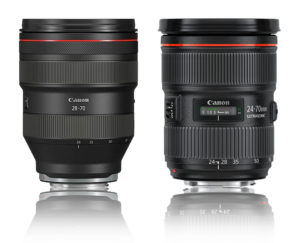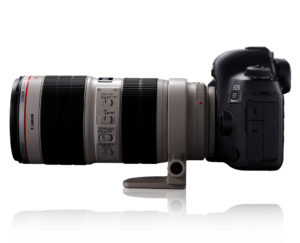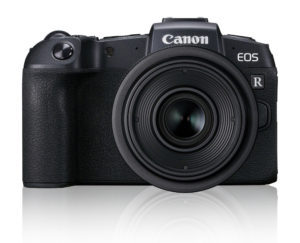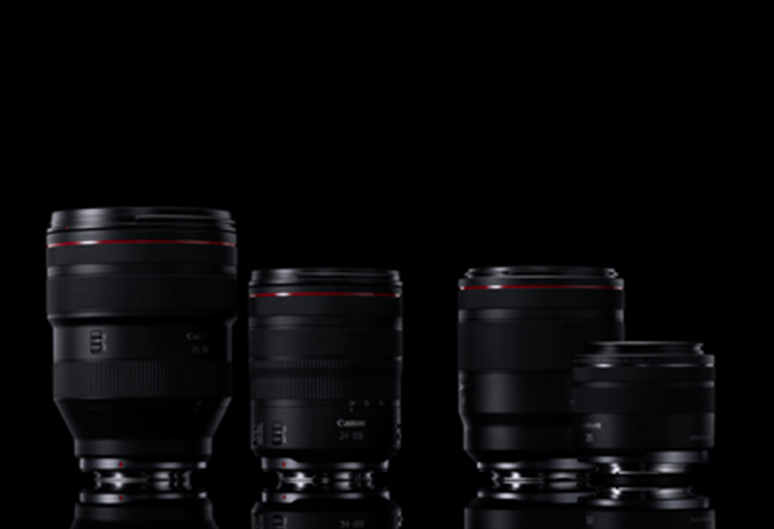One of the biggest, best surprises of 2018 was Canon’s announcement of its full-frame mirrorless EOS R system. No longer was Sony the only full-frame mirrorless game in town — suddenly photographers who wanted a small, fast camera with a large sensor were spoilt for choice.
Canon have updated the range with two professional full frame camera bodies and four new lenses. Read all about the EOS R5 and EOS R6 bodies here and the new lenses here.
Given how long Canon has been in the game, many photographers have of course built up substantial collections of EF lenses for its EOS system, and it therefore came as something of a surprise for some that the new EOS R system would be debuting with a new lens mount — the RF mount — and a selection of new lenses for it that would be arriving throughout 2018 and 2019. No doubt as a way of mollifying some photographers’ concerns, Canon assured everyone that the EOS R would be released with an option EF-EOS R adapter, allowing old lenses to be used on the new camera.

So, many photographers have got to wondering — why use RF lenses at all? Surely I can take the plunge on the EOS R system and keep using my EF lenses as well, right?
Well, we reckon that would be a mistake. RF lenses have many distinct advantages, and are specifically designed to compliment the EOS R and EOS RP cameras, allowing your images to reach their full potential.
To that end, we’ve assembled a list of the top five reasons to use RF lenses with EOS R cameras…

1. The short, wide lens mount
When designing the RF mount and the way that RF lenses connect to EOS R cameras, Canon managed to reduce the flange-back distance (the distance between the lens mount and the imaging sensor) from 44mm to 20mm, bringing it in line with comparable systems like Sony FE or Nikon Z. The lenses are also physically wide, with a large 54mm inner diameter.
Why is this advantageous? It allows for a large element to be placed at the rear of the lens, which reduces the scope for optical aberrations and means lenses can be designed with fewer overall elements, which means they can be made smaller.
These large lenses can also provide other advantages. Let’s take a look, for example, at the upcoming RF 28-70mm f/2L. Its nearest EF equivalent in focal range terms would be something like the EF 24-70mm f/2.8L II USM, and you’ve probably already spotted the difference between the two — that large constant aperture of f/2 throughout the zoom range. It’s the design specific to RF that makes such things possible, and opens up your options in low light and more.
2. Super-fast lens/camera communication
RF mount lenses employ a 12-pin connection between the camera and lens — for comparison, the EF-mount uses 8 pins. What does this mean? Faster data transfer, which means lightning-fast autofocus, enhanced image stabilisation thanks to better communication between the camera and lens, and also provides general optimisation of image quality.
3. RF mount can provide superior image stabilisation
Let’s expand for a moment on the above point and explore how and why the RF mount provides better image stabilisation. RF lenses with image stabilisation (and it’s worth noting that not all of them have it) use a dual gyro sensor system to detect inadvertent movement, and this information is relayed across the fast connection to the Canon camera’s DIGIC 8 processor. At the same time, the sensor is also on the lookout for blur that is caused by these movements, and it also sends this data to the processor, essentially providing confirmation that the inadvertent movement is occurring, and allowing the camera to correct for it. It’s a well-engineered system, augmented by the super-fast connections of RF mount lenses.
4. The DLO (Digital Lens Optimizer)
While this interesting feature has made it onto some EF-mount lenses, it’s on RF mount lenses as a matter of course. The DLO uses the lens’s built-in memory capacity to allow it to store data on any aberrations that occur, meaning it can instantaneously and automatically correct these aberrations in the future.
5. It makes sense to have a dedicated second system
It’s unlikely that any working professional is planning to jump ship wholesale from the EOS system to EOS R. These mirrorless cameras make sense as a second system, whether that’s for jobs where a bulky DSLR would be a disadvantage or simply when shooting for pleasure. As such, it makes sense that if you’re going to have a dedicated second system, you have a dedicated selection of lenses for it. Laboriously swapping your EF 70-200mm f/2.8 lens from the EOS 5D Mark IV to the EOS RP every time you want to switch systems is going to be a cumbersome process, and you’ll find you get much more use out of the second system if it’s always set up and ready to go.
6. You’re future-proofing yourself
It’s an exciting time to be an EOS R photographer. Canon has mapped out the future of lenses for the system and it looks fantastic. To name just a few, there’s the upcoming RF 70-200mm F2.8L IS, covering the workhorse focal range beloved by many pros, which incorporates Canon’s Nano USM lens motors for the fastest autofocus possible. It’s definitely a sign that the firm is taking this system seriously, and the best part about it? It’s tiny. Remember how fewer elements means that lenses can be made smaller? We’re certainly seeing that with the RF 70-200mm F2.8L IS, which is practically half the size of its EF counterpart. Also upcoming are the RF 24-240mm F4-6.3 IS USM, a great all-rounder for travel, and the RF 24-70 F2.8L IS USM we’ve already mentioned, a high-performing standard zoom that’s perfect for weddings and documentary.
This is clearly a system that’s going places, offering features and functionality that you simply won’t get anywhere else. That, more than anything, is why we reckon you’re best off pairing EOS R cameras with RF mount lenses.




Haha yes the lenses can be smaller, but my goodness the L glass is huge. The primes are so much bigger then their Ef counterpart.
I am not seeing any canon camcorder or video dedicated body ready for that mount, however.
Hi Deryl,
Two Cinema EOS canon camera bodies use the RF mount: the EOS C70 with a super35mm sensor and newly announced EOS R5 C full-frame 8K30p body are both high spec video bodies using the RF mount.
Useful article thanks
It’s also noteworthy to add that the fewer elements inside a lens the better microcontrat it yields thus creating thay magic Pop out effect.
I understand the progression to mirrorless camera bodies, and Canon entering the arena a little late to Sony makes perfect sense. Unfortunately Canon changing their glass eco system with a little over 2 decades each time (FD -1971 -1995) –(EF 1988 -2020) is a hard pill to swallow.
Respectively if having to change to a completely new lens eco system to fully utilise the RF body I would consider other brands on the market. Staying with Canon would hold no sway in obsolete glass. Better to re –evaluate other manufactures.
A gamble time will tell for Canon .